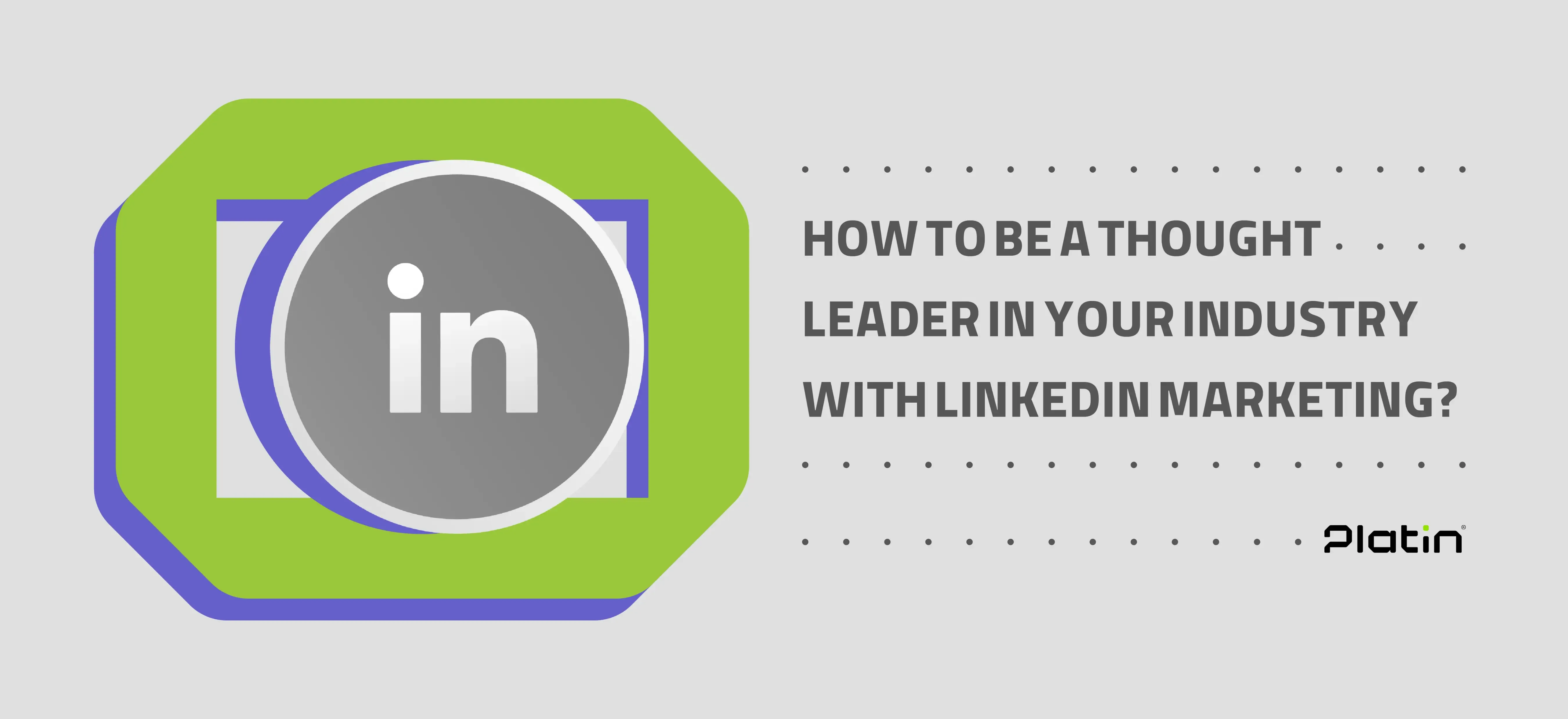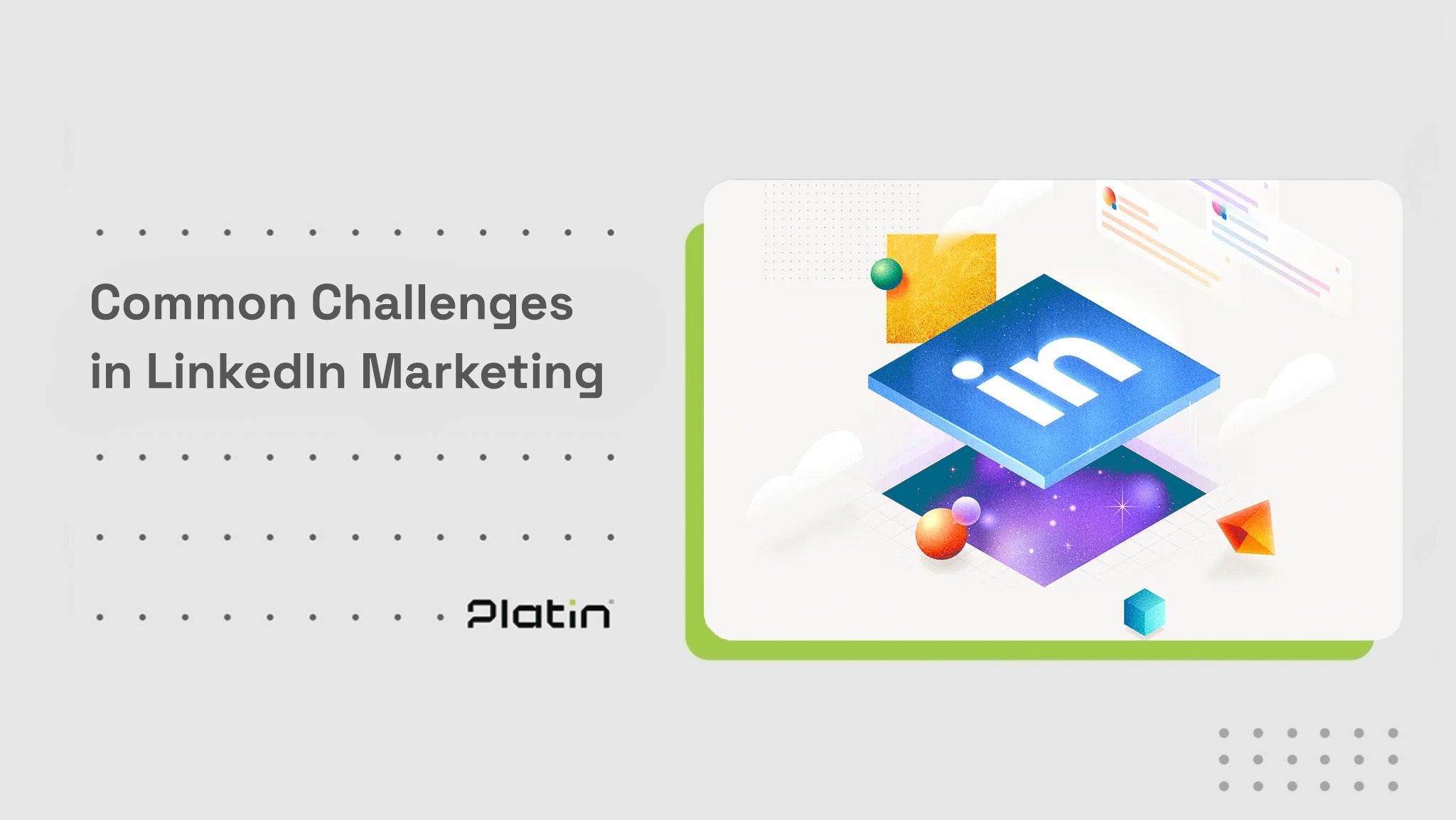How to Become a Thought Leader in Your Industry with LinkedIn Marketing?

In today’s business world, professional networking is no longer a choice; it’s a necessity. LinkedIn, as the largest professional social network, serves as an ideal platform for business connections, branding, and B2B marketing. With over 900 million users, 40% of whom are executives and key decision-makers, this platform provides a unique opportunity for business growth. But why are so many brands still failing to leverage this tremendous potential effectively? In this article, we’ll review the most important LinkedIn marketing strategies. These strategies will help you use this platform not only to attract new clients but also to build credibility, increase engagement, and position yourself as a thought leader in your industry. If you want to turn LinkedIn into the growth engine of your business, don’t miss this article!
LinkedIn Is More Than Just a Resume!
With an audience of over 900 million users, LinkedIn has become the primary platform for professional networking in recent years. Unlike other social networks that mainly focus on personal interactions, LinkedIn is a hub for building business connections, developing skills, and sharing professional knowledge. From startups to Fortune 500 companies, everyone uses this platform to attract clients, recruit top talent, and enhance branding.
The Importance of LinkedIn in B2B Marketing and Professional Branding
B2B marketing heavily depends on effective communication and trust—two areas where LinkedIn excels. According to the Content Marketing Institute, about 96% of B2B marketers use LinkedIn for content distribution. Moreover, brands like Adobe and Microsoft have successfully strengthened their market presence and audience engagement through targeted LinkedIn content campaigns.
The Role of LinkedIn in Personal Branding
LinkedIn plays as critical a role in personal branding as it does in B2B sales. Personal branding on LinkedIn allows you to be recognized as an expert in your field. Research shows that professionals who post regularly on LinkedIn receive seven times more collaboration requests than others. Therefore, having a consistent content strategy can pave the way to becoming a thought leader in your industry.
How to Get Noticed by Industry Executives and Decision-Makers with LinkedIn Marketing
Marketing activity on LinkedIn, like other social platforms, offers benefits for users. Let’s explore its statistical advantages.
Increasing Brand Visibility Among Professionals
LinkedIn is the only social network where 40% of users are executives, decision-makers, and industry specialists. According to LinkedIn Business reports, posts published by businesses on LinkedIn receive 57% more engagement than on other social platforms. This means your content not only reaches the right audience but is also viewed by people with real decision-making power.
Opportunities for Lead Generation and Networking
According to HubSpot data, the lead conversion rate on LinkedIn is 2.74%, while on Facebook and Twitter it is 0.77% and 0.69%, respectively. In other words, LinkedIn is three times more effective at generating high-quality leads compared to other platforms.
Building Credibility and Thought Leadership in Your Industry
A study by Edelman & LinkedIn revealed that around 60% of senior decision-makers consider thought leaders as their primary source of industry insights. Publishing analytical articles, industry reports, and case studies on LinkedIn can solidify your position as a trusted expert.
Key Components of a LinkedIn Marketing Strategy
To succeed in LinkedIn marketing, a comprehensive strategy is essential. Here are four key elements that form the foundation of an effective LinkedIn marketing plan:
- Profile Optimization: Creating a professional company page or an attractive personal profile is the first strategic step to introduce your brand and values.
- Content Creation: Publishing valuable and relevant content that captures attention and drives engagement is the second critical pillar.
- Engagement: Building relationships within your professional network through comments, content sharing, and ongoing interactions is vital.
- Advertising: Leveraging LinkedIn advertising tools such as Sponsored Content and InMail is the final element for reaching target audiences and boosting conversion rates.
Is LinkedIn Marketing Right for Your Business?
Before investing in LinkedIn marketing, you need to assess whether this platform aligns with your business goals. Let’s examine the key factors to consider.
Alignment with Target Audience
The first step is to evaluate whether your ideal customers are active on LinkedIn. According to LinkedIn Business, 40% of LinkedIn users are executives and key decision-makers. If your business operates in B2B or your clients include executives, entrepreneurs, and professionals, LinkedIn is the perfect platform for your marketing efforts.
Industry Relevance
Certain industries, due to their professional nature, are more prominent on LinkedIn. Statista reports that around 65% of marketers in industries like technology, finance, consulting, and education use LinkedIn as their primary marketing platform. If you’re active in one of these fields, LinkedIn can create exceptional opportunities for brand growth and client acquisition.
Suitable Content Types for Your Business
LinkedIn is a platform where specialized content, case studies, webinars, and industry reports perform well. If your brand can produce educational and insightful content, being active on LinkedIn will help you establish yourself as a thought leader.
Marketing Team Resources and Capacity
Managing LinkedIn marketing requires time and resources. Regular content production, user engagement, and ad campaigns all demand careful planning. If your team cannot maintain consistent content output, results may fall short of expectations.
Steps to Develop a LinkedIn Content Strategy
A strong content strategy not only helps you remain top of mind with your target audience but also builds trust and drives engagement. Here are the key steps to developing a LinkedIn content strategy:
- Defining Goals: Set clear, measurable objectives for LinkedIn marketing that align with your overall business goals.
- Content Planning: Identify topics and formats that resonate with your target audience. Educational content, case studies, analytical posts, and industry reports often perform best.
- Content Calendar: Plan a consistent posting schedule with strategic timing and content variety.
- Performance Metrics: Track metrics such as engagement (likes, comments, shares), reach, and conversion rates to measure success.
Common Challenges in LinkedIn Marketing
LinkedIn marketing comes with unique challenges businesses must overcome to succeed. The most common obstacles include:
- Content Saturation: With so many users posting daily, standing out is tough. Relevant, engaging, and valuable content is crucial.
- Consistency: Regular, sustained posting is vital for audience engagement, but balancing quality and quantity can be difficult.
- Algorithm Changes: LinkedIn’s constantly evolving algorithm impacts content visibility. Staying updated and adapting strategies is critical.
- Measuring ROI: Evaluating return on investment can be complex. Setting clear goals and using LinkedIn analytics provides better insights.
By recognizing these challenges and implementing strategic approaches, you can maximize effectiveness and achieve your marketing goals on LinkedIn.

Effective Ways to Enhance Visibility and Business Growth on LinkedIn
A strong LinkedIn presence is essential for businesses to gain visibility, engage with professionals, and grow. Here are several key approaches:
- Develop a Comprehensive Social Media Strategy: Tailor your approach specifically for LinkedIn. Understand your audience’s behavior and deliver content that meets their needs and interests.
- Leverage Social Selling Techniques: Businesses that actively engage on LinkedIn and prioritize LinkedIn marketing often outperform others by fostering stronger, more meaningful connections with potential clients.
- Maintain an Active and Credible Presence: Share valuable content, company news, and industry insights regularly. Authentic posts build trust and engagement.
- Engage in Industry Conversations: Join relevant LinkedIn groups, follow industry leaders, and participate in discussions. This positions your business as a thought leader while keeping you updated on industry trends.
- Align Social Media Voice with Brand Identity: Ensure your LinkedIn presence reflects your brand’s tone and values. Consistent and clear messaging strengthens your positioning and captures your target audience’s attention.
By executing these strategies, your business can leverage LinkedIn’s potential to build meaningful connections, increase brand credibility, and succeed in the marketplace.
Conclusion
LinkedIn provides an excellent opportunity for brands and professionals to establish themselves as thought leaders in their industries. A strong content strategy, consistent engagement, and use of LinkedIn’s advertising tools not only attract target audiences but also foster credibility and trust. Success in LinkedIn marketing requires valuable content creation, profile optimization, consistent activity, and active participation in industry discussions. In today’s digital era, brands that effectively showcase their knowledge and expertise will secure the largest share of professional attention and engagement. If you seek to build a strong and influential position in your industry, LinkedIn is the ideal platform for you.